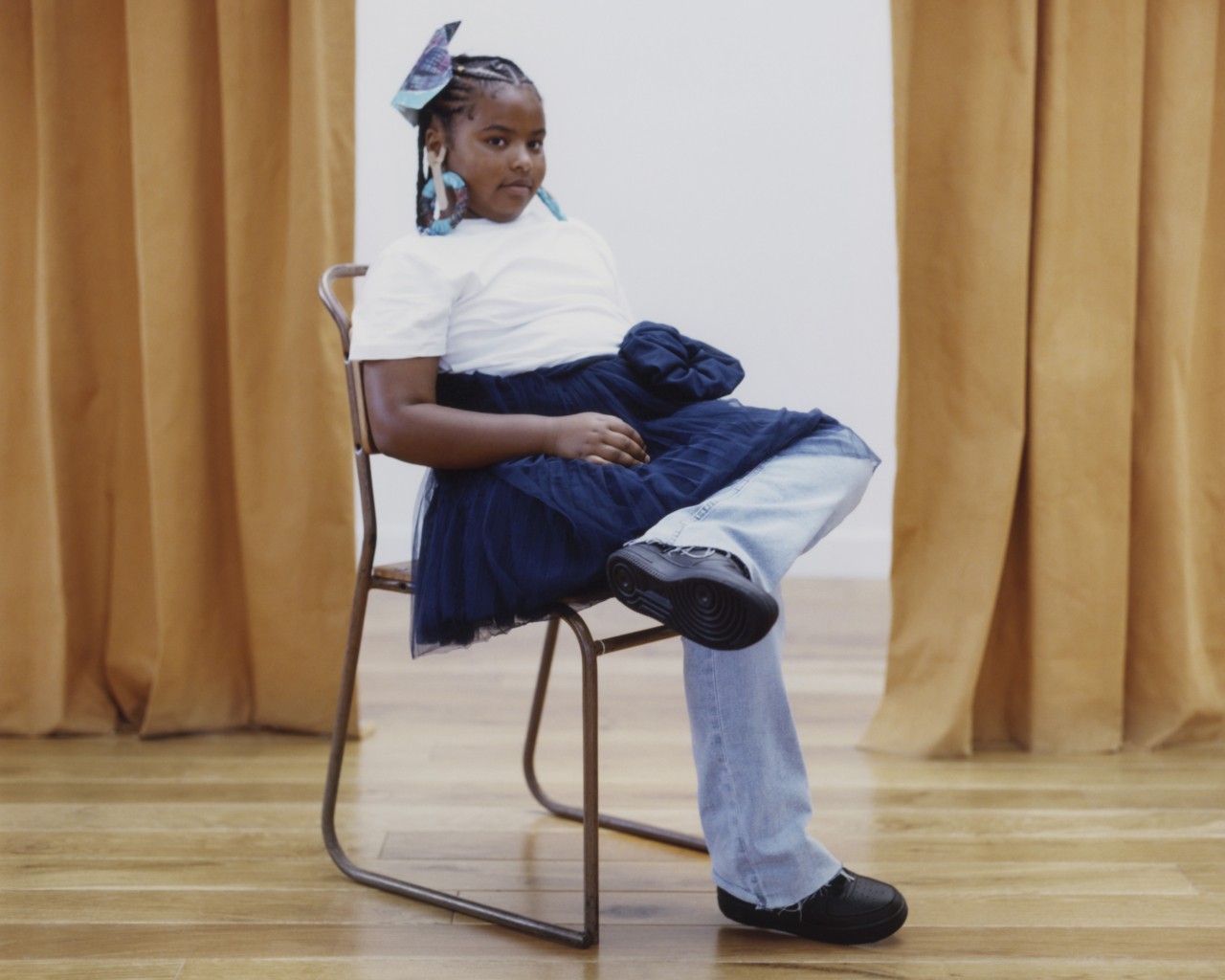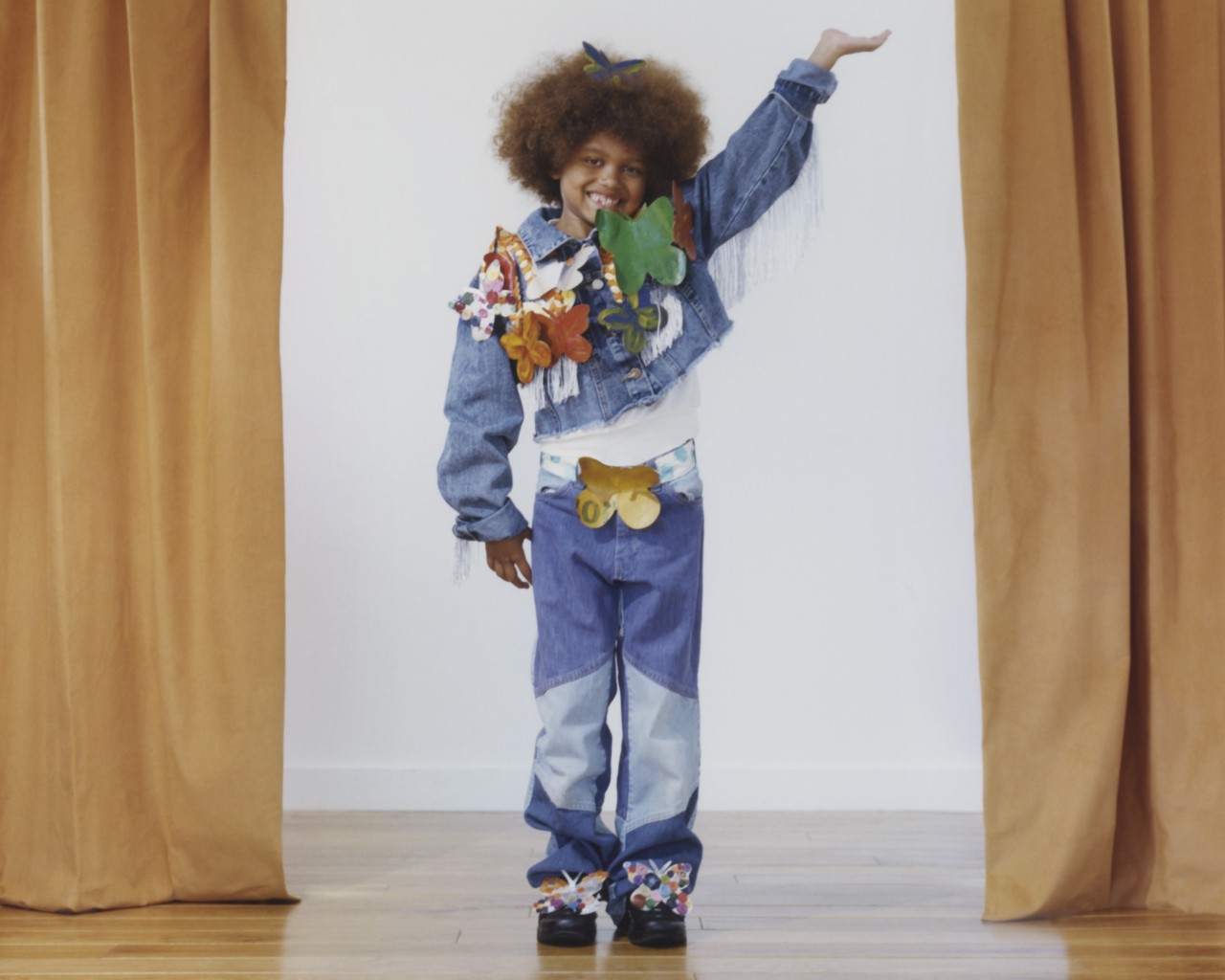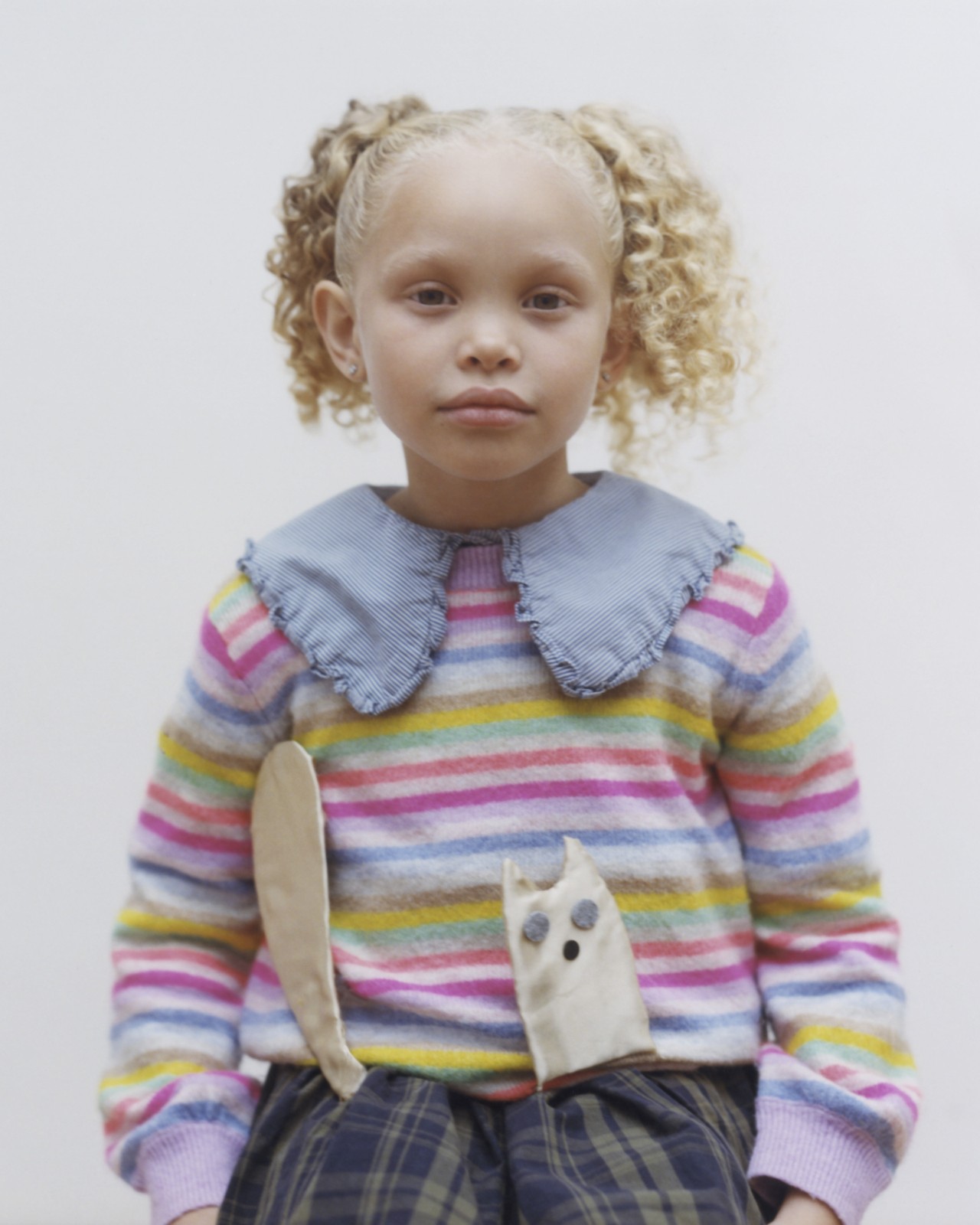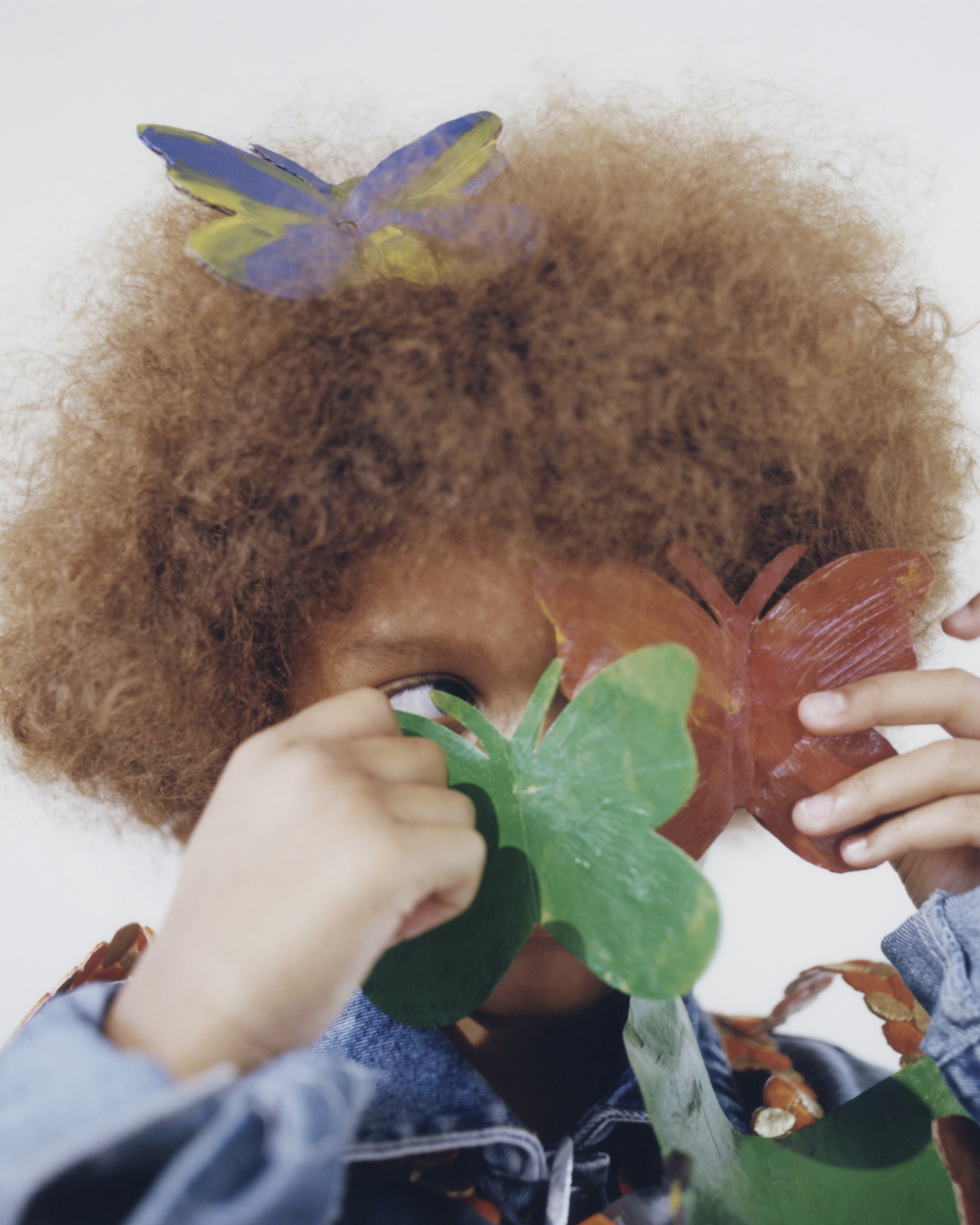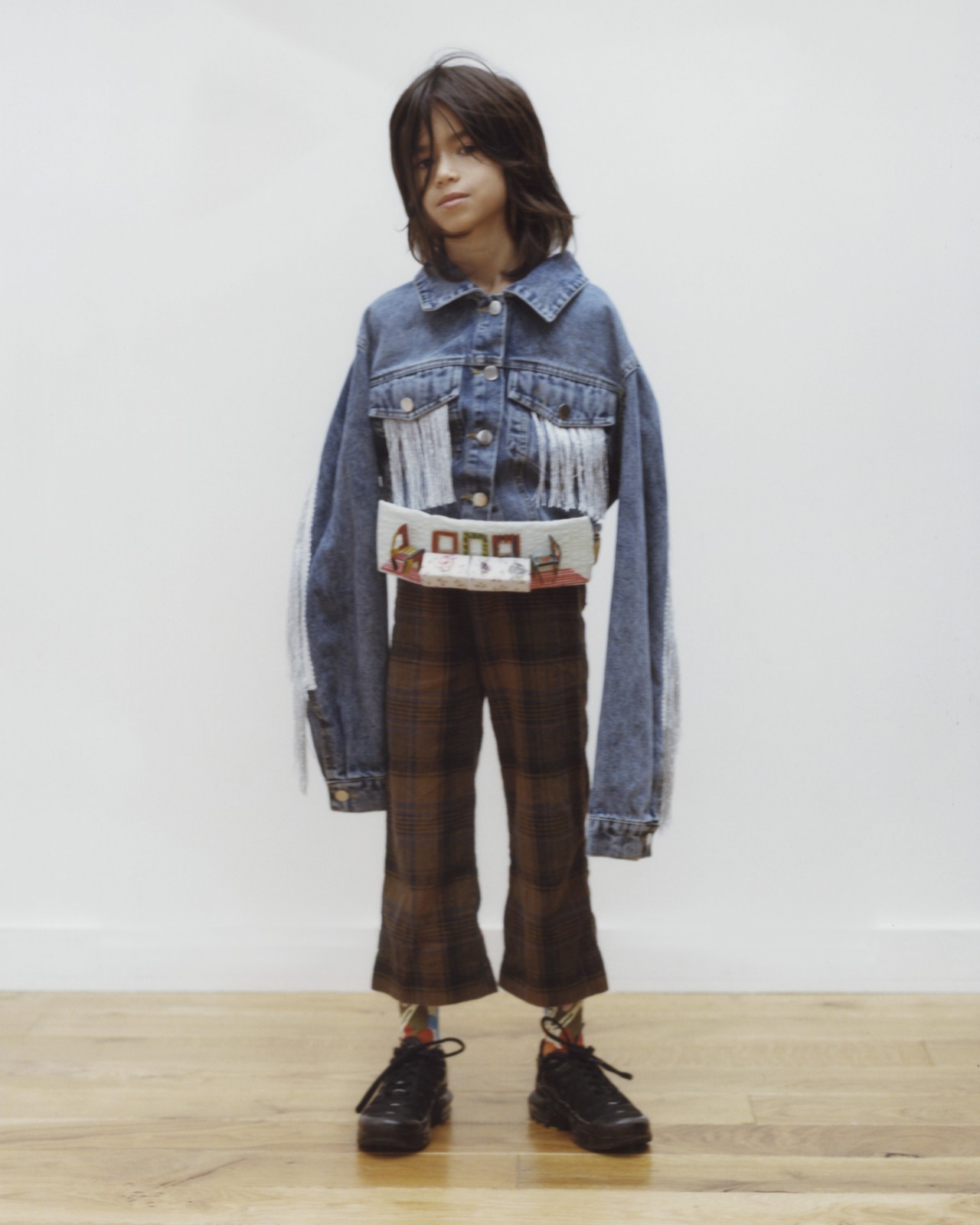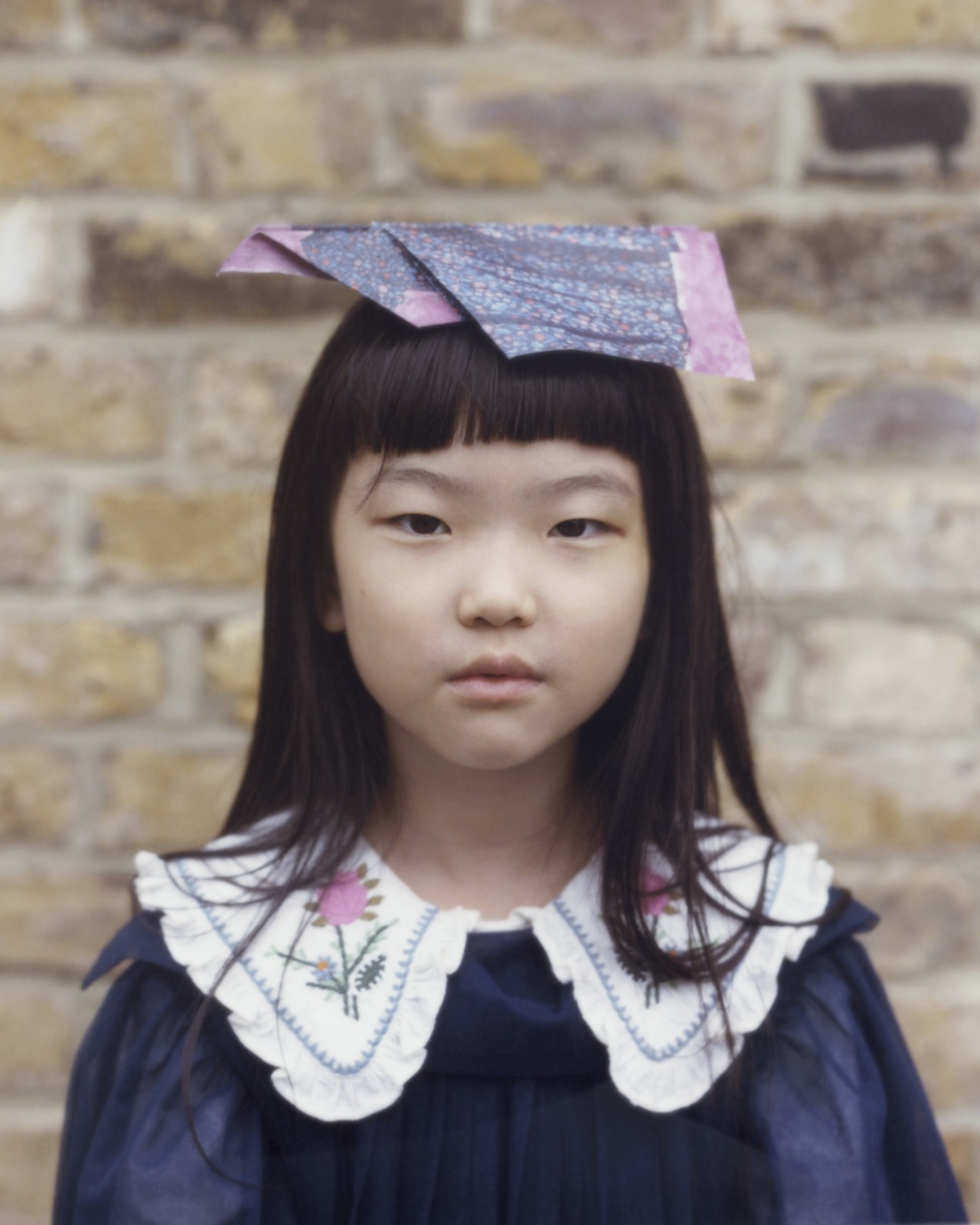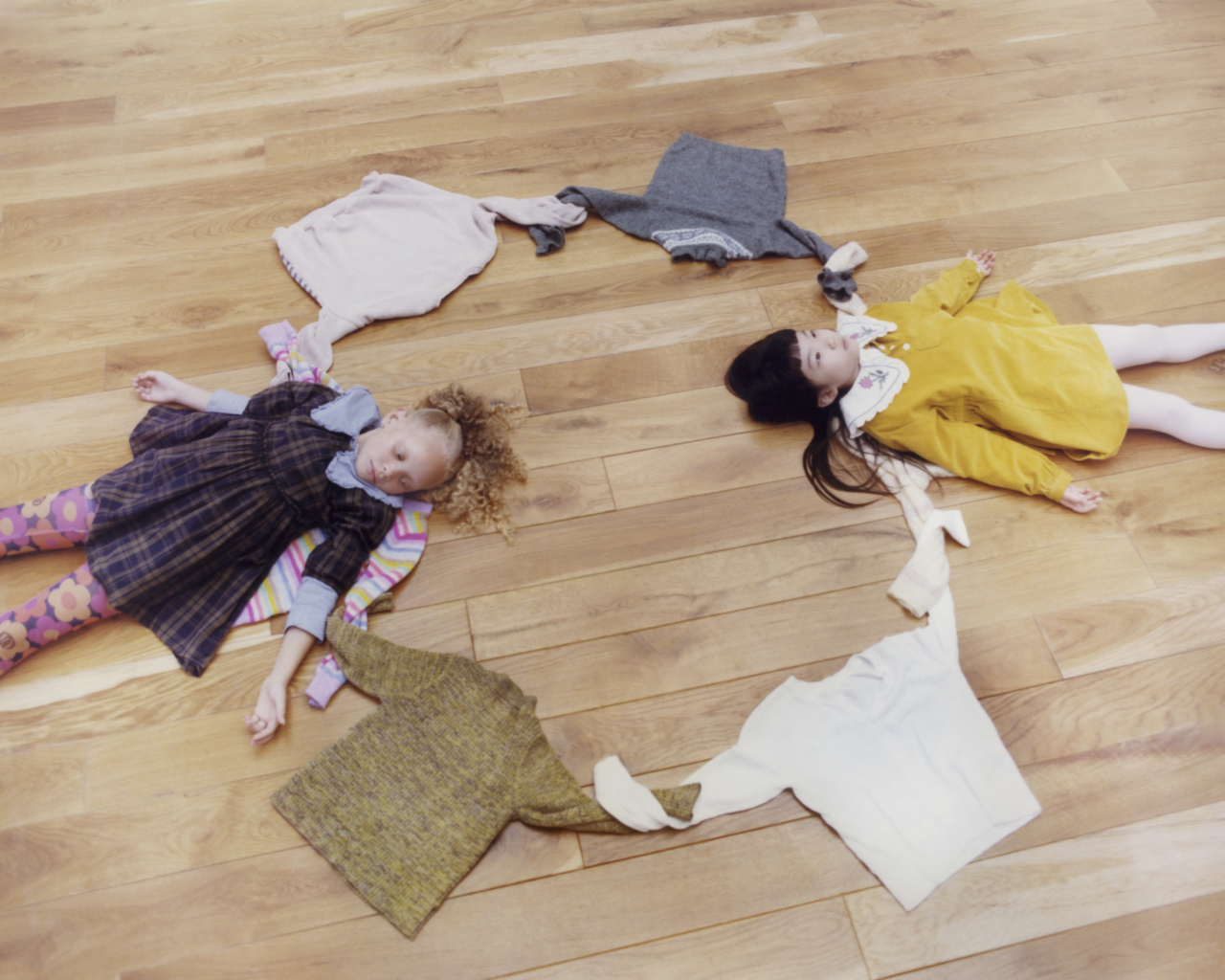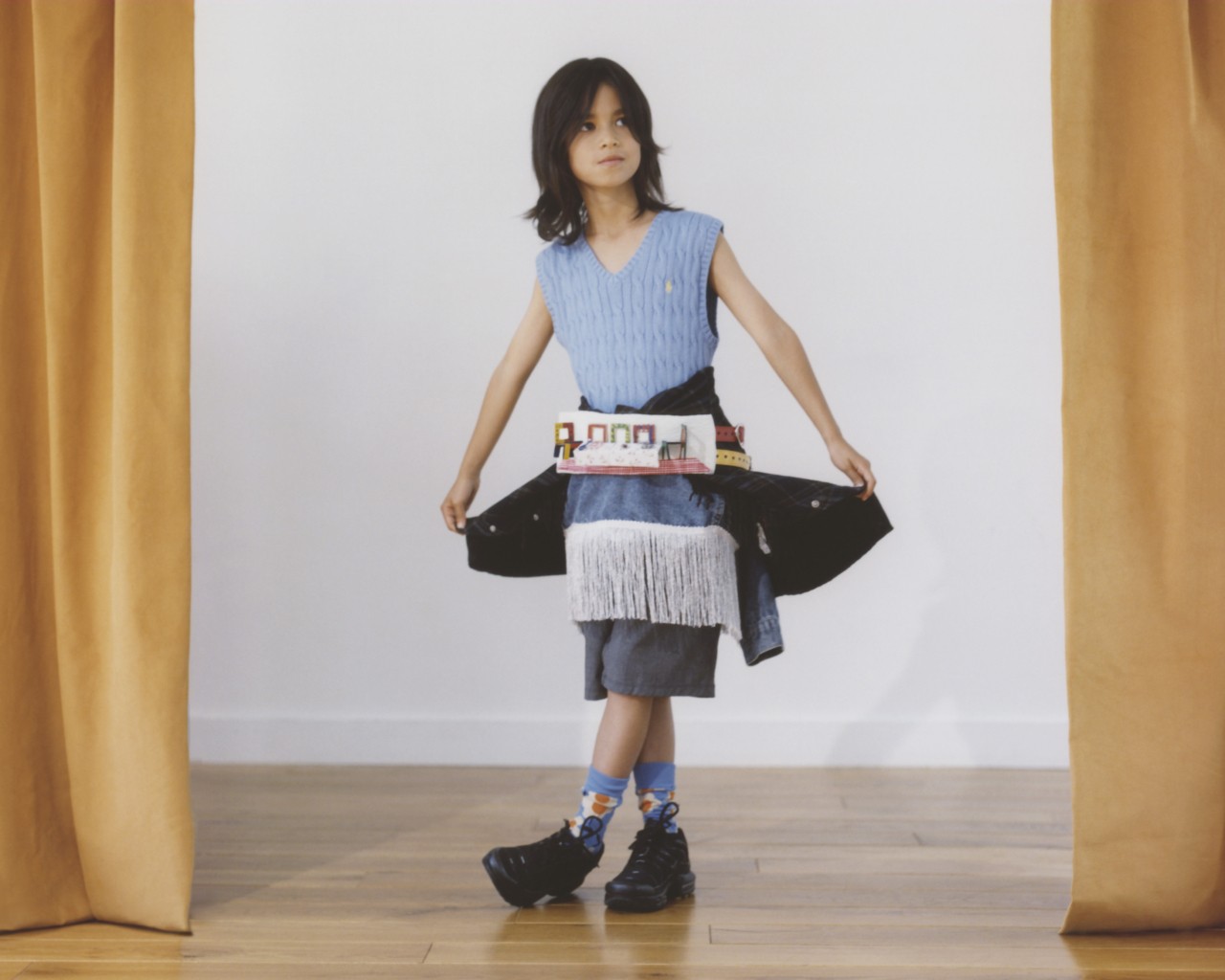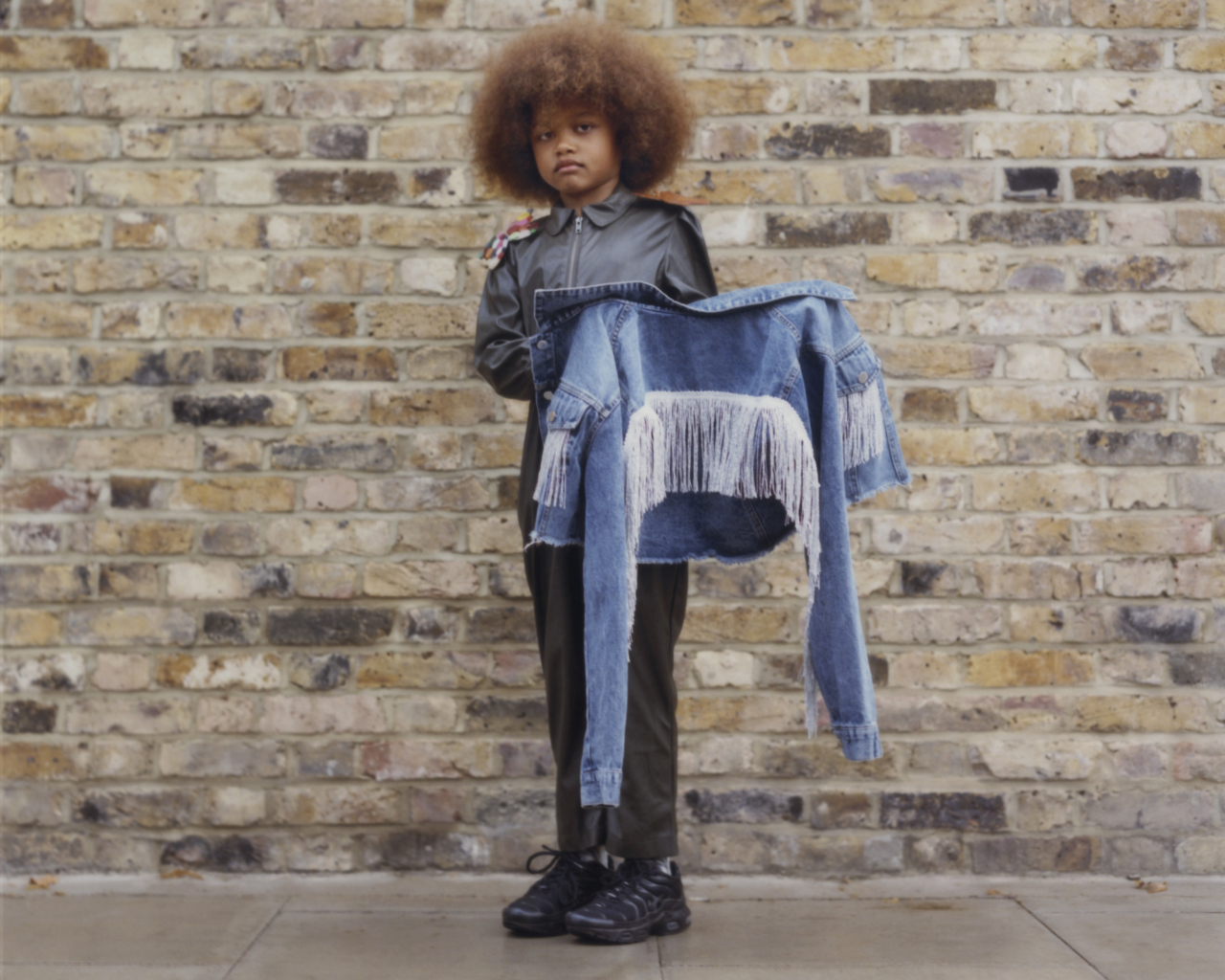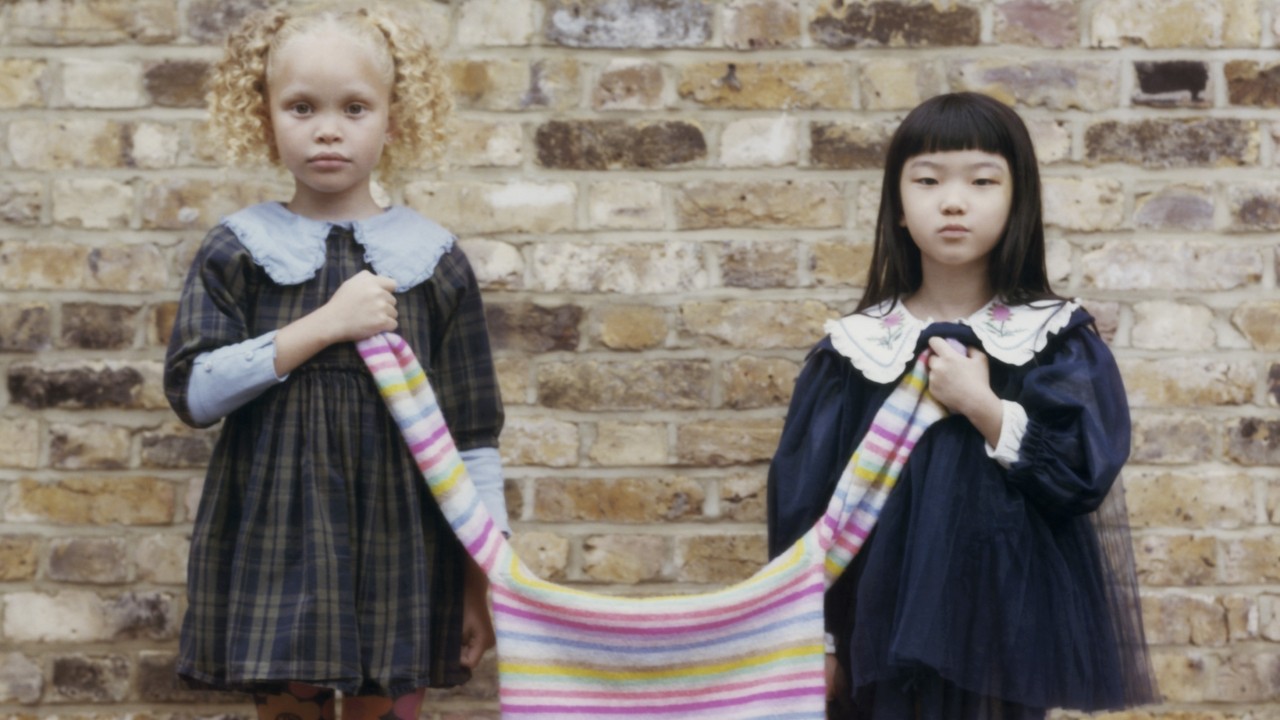
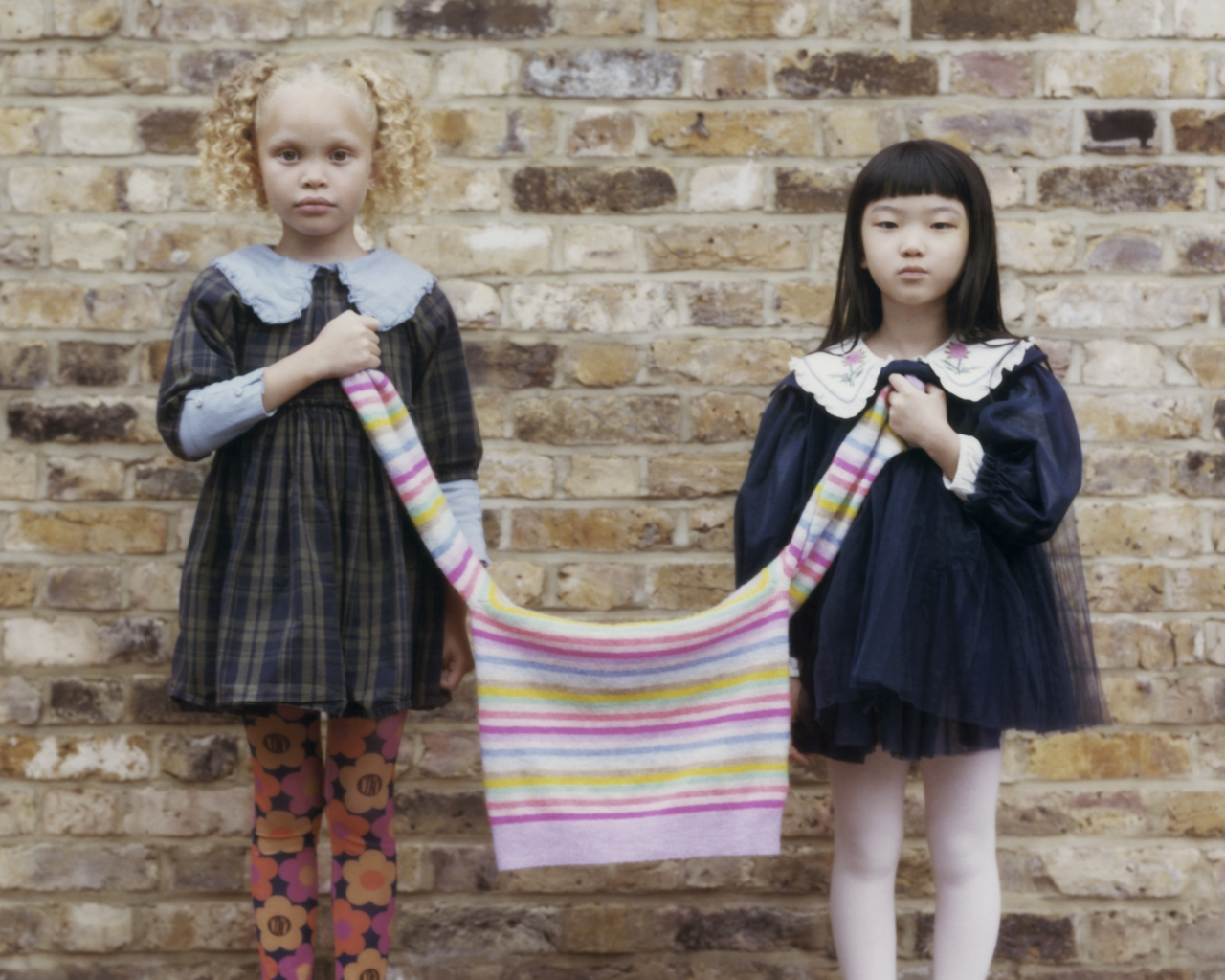
WORDS BY JESS YUPANQUI FEINGOLD
photographs by Maya Aska
styling by daniela benaim
Jess Yupanqui Feingold is the co-CEO of Common Future, an organization seeking to build a more racially equitable economy. This Points of View article reflects her opinions, not necessarily those of Atmos.
I became a parent for the first time in March 2025. And, like most parents, the world urged me to buy. My Instagram feed was flooded with advertisements for baby items, including clothing, toys, and other pastel-colored goods.
The ads were relentless, but not surprising. I’m well aware of how ubiquitous the call to consume. My day job is co-CEO of the organization Common Future, where I work to tackle racial capitalism at its root causes.
I also know that overconsumption isn’t a naturally occurring phenomenon. It’s a learned behavior taught to us by design—whether it be through policy, higher education, or the allure of social media hits. I wondered: Could I see these forces training my child—all our children—into becoming rampant consumers?
I see those influences clearly in my own childhood. Growing up in the ‘80s, dolls were marketed as collectibles: a Barbie for every holiday, an entire patch of Cabbage Patch Kids, and Care Bears in all colors of the rainbow. The want to complete collections transmuted into a need. We were being trained on what to ask for and how to ask. From an early age, I was able to make a case for more, more, more. And parents—especially those who are “very online”—are conditioned to oblige.


Amanda Hess’ book, Second Life, describes how companies latch onto pregnancy and childbirth as major consumer events, using social media platforms to sell ideas about “normal” pregnancy, “good” mothering, and “adequate” female bodies. This phase of life comes with rapid changes—in clothing size, discomfort, and priorities. The baby industrial complex “makes us feel insufficient and then sells us the product that makes us whole again,” Hess writes.
Consider, for instance, the gift registry tool Babylist. Expecting parents record their due dates into the system, and Babylist quickly assumes the role of know-it-all friend and guide. It synchronizes weekly marketing emails that pair parent education with a litany of targeted products—hooking consumers at a vulnerable stage by raising problems, and then selling potential solutions. Calls to consume aren’t always subtle, either. One recent email about children’s books even called on subscribers to “Fill That Shelf!” This, of course, is big business: Babylist generates more than half a billion dollars in annual revenue, with 85% affiliate revenue driven by a single partner.
Even if you try to hide your pregnancy from the internet by dodging Google searches, product marketing will inevitably find you by noting subtle differences in your online behavior—sometimes even predicting your pregnancy before you are aware of it yourself.
The baby industry targets new and expecting parents with products they say are gold standards. By purchasing them, parents prove that they care the most about their kids. The SNOO, for instance, is a $1,700 bassinet that promises more sleep for parents—a rare commodity—by gently rocking their babies. My friends have admitted to me that they’ve never used the functions, that the swaying made their babies sick, or that they swapped it out for a normal bassinet. But it’s hard to forgo the status symbol.


There’s also the Nanit Pro baby monitor, which comes with a heart rate monitoring belt for your child, or the must-have Baby Brezza—a high-tech device that warms and dispenses baby formula and was recommended to me by a busy emergency room doctor. A well-known chef in one of my mom group chats had a very different opinion: ”IMO you just mix the formula with the water and that’s it.”
Without a doubt, some of these gadgets are actually useful. Life as a new parent is hard, and I encourage parents to find ease where possible. For example, I love my NutriBullet Baby. Even if I could steam and blend vegetables on my own, the automatic shut-off for sleepy forgetfulness is reassuring. However, considering how short the phase for pureed foods is, I couldn’t help but wonder: What will become of this mostly plastic item in a few months when it’s past its usefulness?
Such ephemerality is best understood through clothing, piles of which grow as children outgrow. The United Nations estimates that the textile industry accounts for up to 8% of global greenhouse gas emissions. Yet many parents, not knowing what to do with outgrown clothes, simply throw them away.
How Can I Not Overconsume as a Parent?
There are ways to resist the trap of consumption, even for items that, by necessity, won’t last for life. Instead of buying brand-new clothes and later dumping them, for instance, parents can buy them second-hand, from marketplaces like Prelove You, which has created a circular economy of used, loved, and outgrown items. Apps like Commons.earth offer guidance on materials, consumption, and supplier accountability.


Other ways to reduce waste include:
Using developmental milestones to discern between wants and needs. Know what toys and items are developmentally appropriate by age—and understand how long that phase might be—to determine whether to rent, buy, or borrow.
Making the most of no-buy groups and mutual aid. Hyperlocal group chats for parents keep you in the loop on items that are available, free on the curb, or needed by others, facilitating no-cost exchanges and ensuring long and substantial use.
Ceremonializing hand-me-downs. Objects tell a story. Let your children know who owned and played with a toy before, and where it is going when they let go of it. Normalize the fact that while toys may be with us for a short time, their materials and their worth are on this planet much longer.
Embracing gender neutrality. Companies have long marketed separate toys for boys and girls, reflecting outdated notions of gender identity and leading to greater consumption.
Celebrating multiracial representation. There are an increasing number of multicultural books and toys that help kids feel represented and included. Support these authors and creators, and pass along these items to others regardless of their racial identity.
Having a clear philosophy on gift giving. My friend asks to review all holiday and birthday presents for his children to ensure gifts are needed, not ostentatious, and won’t increase expectations around deservedness and consumption. In his opinion, the parents are providing all necessities; gifts given as celebrations—or even rewards—place unintentional value on things.

Teaching the value of making. When kids want to play kitchen or astronaut, make scenes yourself from old boxes or crates and encourage what psychologists call “open-ended” play.
Instilling the idea that the best things in life are free. In addition to unstructured play, child psychologists recommend storytelling, conversation, and exploration in nature, all of which cost nothing and build creativity and imagination.
It’s expected that parents want to provide the best childhood for their kids. No products, however, assure a good, safe, or healthy life. You can’t buy your way into guarantees.
We can model more sustainable living for our children, demonstrating ways to live with lower consumption, in lesser conflict with the very planet that has provided us this one, precious life. Teaching children to be mindful of their consumption from an early age is a true paradigm shift: one that places Earth and resources back into the center of the gratitude we owe.
In my work and as a new mother, I am acutely aware of the communities overburdened by our unwanted clothes and other items, and who sit at the frontlines of our changing climate. Our consumption, however, ties our fates together. Factor that in each and every time you swipe your credit card.


SPECIAL THANKS Prelove You Talent Mia @ Bruce&Brown, Valentino @ Bruce&Brown, Yarling @ Pixie Models, Jun @ Grace&Galor, Luna @ Bruce&Brown Creative Direction and Styling Daniela Benaim Creative assistant Annabelle Pearson Photography Maya-Aska Lighting assistant Stuart Nimmo, Kaiwei Duan, Adam Lin Video director Cayetano Garcia Sahurie Assistant director Cristina Alayza Director of photography Joe Almond Writer Cristina Alayza Music and sound mixing Juan Francisco Malatesta Editor Cayetano Garcia Sahurie Color Grader Joana Nunes Graphic designer Martin Naranjo Silva Lead hair and makeup artist Karla Q Leon Hair and makeup artist assistant Elizabeth Gaona Set design and props Fiorella Pomarino Production Lucio Martus Location 63Sun Studios
How to Resist Buying So Much as a New Parent
